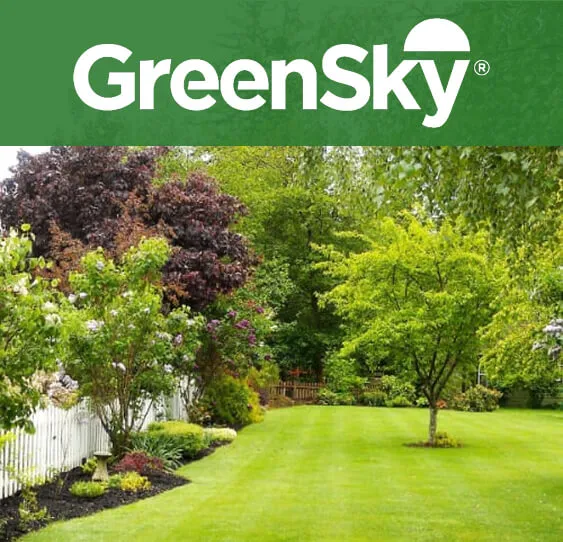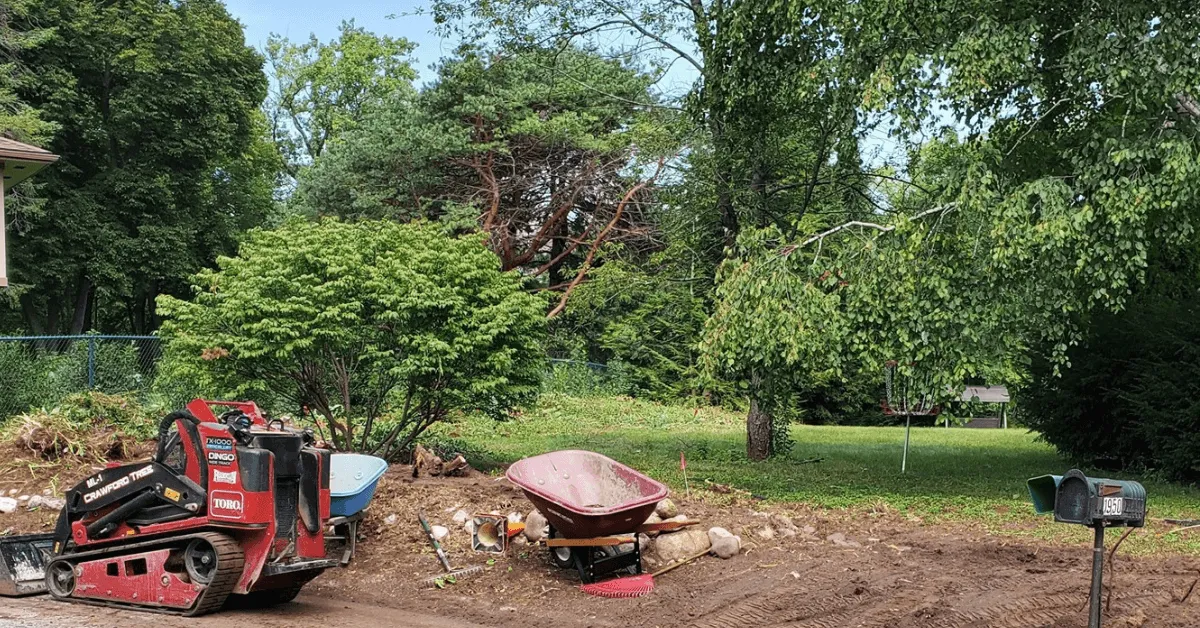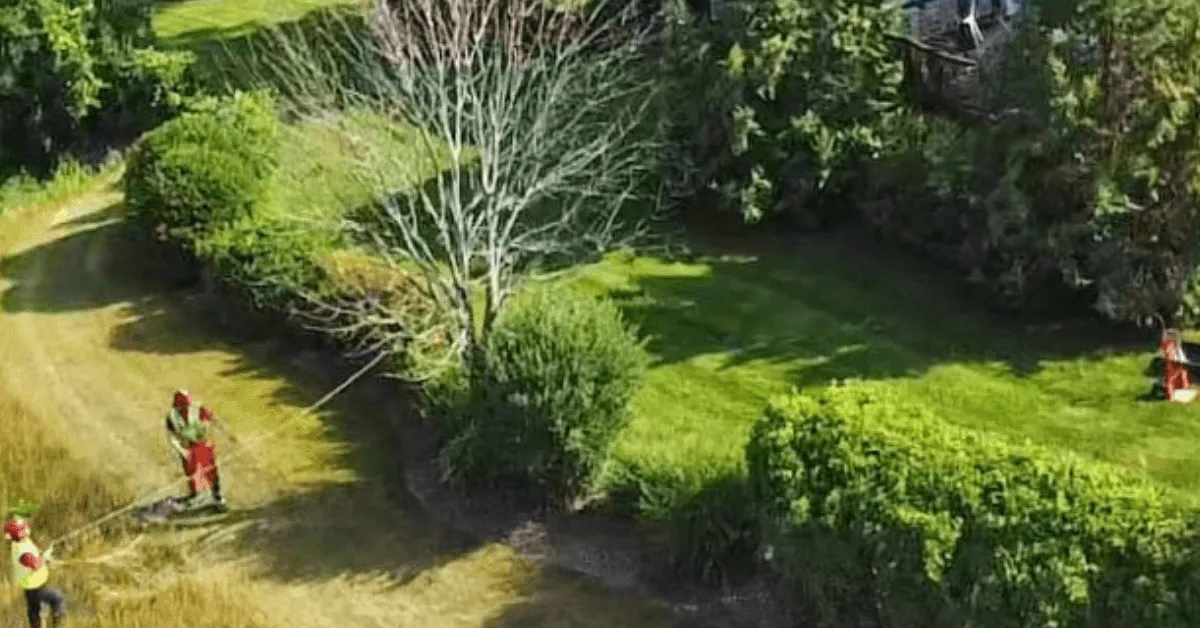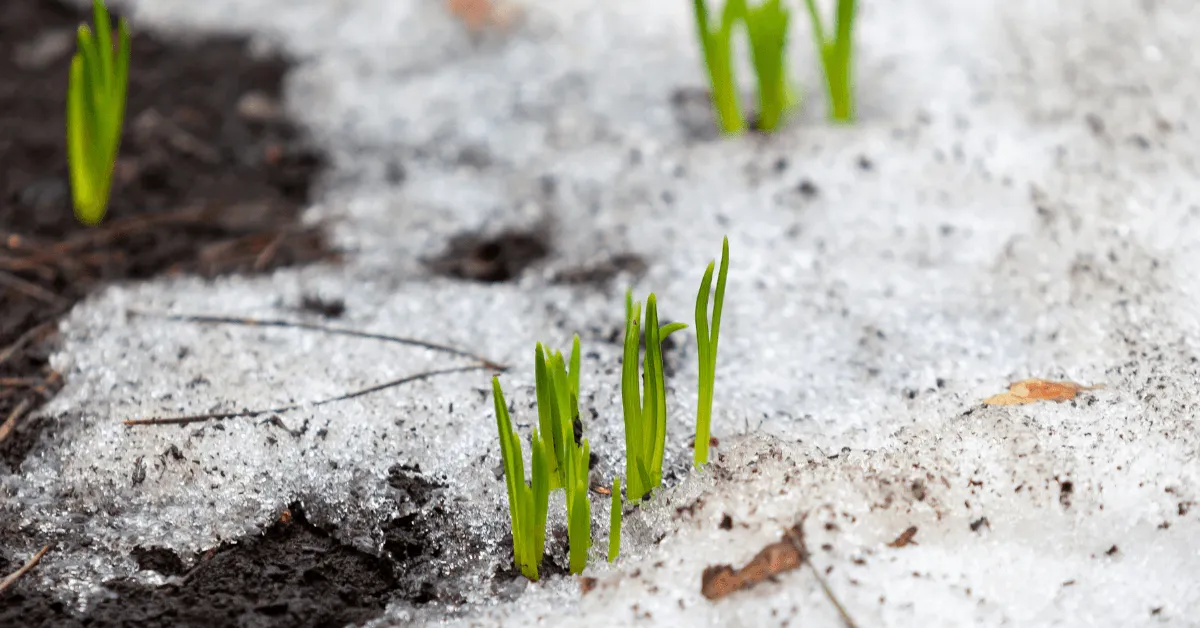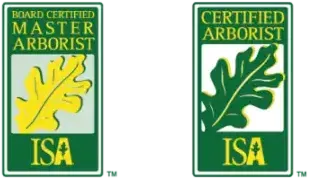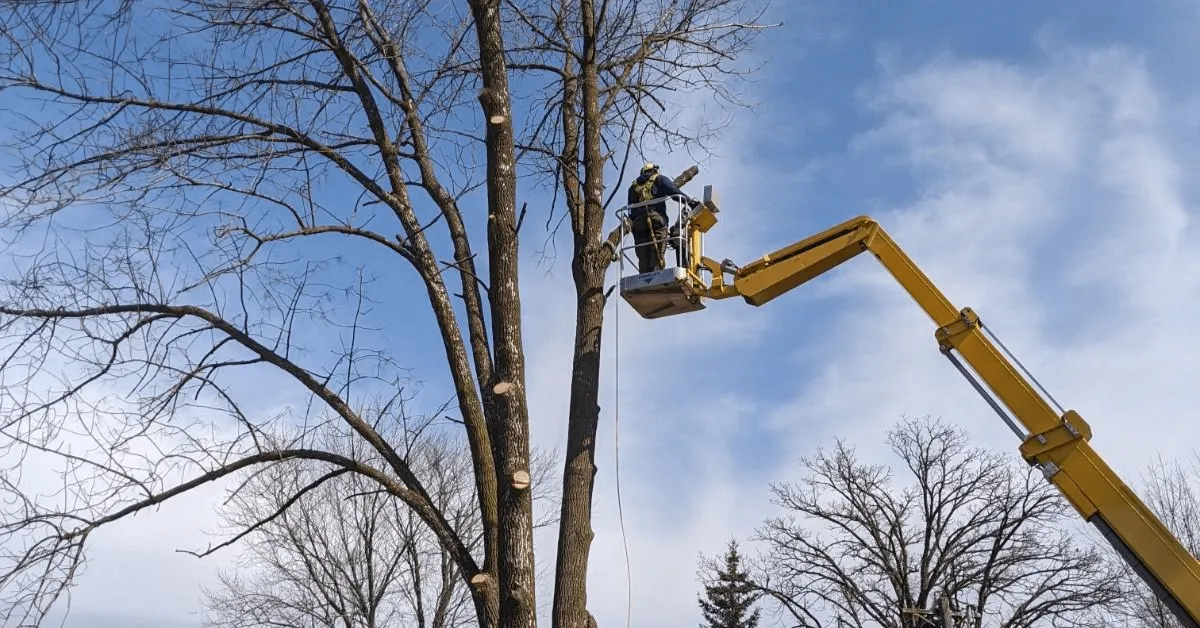
September 22, 2025
Winter may seem like nature’s quiet season, but for Wisconsin homeowners from Bayside to Waukesha, the dormant period represents the most strategic time for tree care and landscaping work. When trees enter their natural resting phase from late November through early March, property owners gain unique opportunities to improve tree health, prevent costly problems, and prepare landscapes for vibrant spring growth.
Understanding why certified arborists across southeastern Wisconsin recommend winter tree work can transform your approach to landscape management. This comprehensive guide explores the science-backed benefits, local considerations, and best practices for dormant season care in our challenging climate.
What is Dormancy and Why Does It Matter for Wisconsin Trees?
Dormancy is a sophisticated survival mechanism that allows trees and shrubs to endure harsh Wisconsin winters. During this period, deciduous trees shed leaves, metabolic processes slow dramatically, and growth above ground essentially stops. Root systems remain minimally active, maintaining essential functions while conserving energy reserves.
This biological pause occurs when daylight hours shorten and temperatures consistently drop below 40°F. Common Wisconsin tree varieties like red oak, sugar maple, and ash trees respond predictably to these environmental triggers, making dormancy the ideal window for maintenance activities.
Why This Matters for Homeowners: Trees in dormancy can tolerate pruning, treatments, and other interventions that would stress or damage them during active growing periods. Understanding this natural cycle helps you work with nature rather than against it.
The Science Behind Winter Tree Care Benefits
Enhanced Disease Prevention and Faster Healing
Research from the International Society of Arboriculture demonstrates that pruning cuts made during dormancy heal 40% faster than cuts made during growing seasons. Without competing demands from leaf production, trees can focus energy on wound closure and pathogen resistance.
Many fungal diseases that threaten Wisconsin trees remain inactive during the winter months. Oak Wilt, a devastating disease affecting red oak varieties throughout Wauwatosa and Brookfield, spreads primarily through wounds made between April and July. Dormant season pruning virtually eliminates this transmission risk.
Reduced Pest Pressure and Treatment Effectiveness
Emerald Ash Borer, the invasive pest threatening ash trees from Mequon to New Berlin, overwinters in larval stages beneath bark. Winter Plant Health Care (PHC) treatments target these vulnerable life stages before adults emerge in spring, providing season-long protection.
Systemic treatments applied during dormancy move throughout the tree’s vascular system more effectively than growing season applications, as trees aren’t actively translocating nutrients to leaves.
Superior Structural Assessment
Without foliage obscuring branch architecture, ISA-Certified Arborists can accurately identify structural defects, weak attachments, and hazardous conditions. This visibility is particularly valuable for mature trees along streets like Barker Road in Fox Point or around parks like Klode Park in Whitefish Bay, where small problems can develop into major safety hazards.
Wisconsin-Specific Dormant Season Advantages
Clay Soil Protection
Southeastern Wisconsin’s heavy clay soils, prevalent from Elm Grove to Germantown, present unique challenges. These soils compact easily when wet, damaging root systems and limiting water infiltration. Frozen ground during the dormant season provides stable working surfaces that support heavy equipment without causing compaction damage.
Winter operations protect soil structure essential for root health, preventing costly restoration needs come spring.
Weather Pattern Optimization
Wisconsin’s continental climate creates harsh conditions, including ice storms, heavy snow loads, and frequent freeze-thaw cycles. Strategic winter pruning removes weak branches before ice loading can cause failures, while proper timing avoids periods when sap flow might compromise healing.
Local Pest Management
Beyond Emerald Ash Borer, Wisconsin faces threats from scale insects, aphids, and various fungal pathogens. Winter treatments disrupt pest life cycles when they’re most vulnerable, providing more effective control than reactive growing season applications.
Essential Dormant Season Services for Wisconsin Properties
Strategic Winter Pruning
Timing Considerations: Late December through February provides optimal windows for most Wisconsin tree varieties. Sugar maples, common in Shorewood and Glendale should be pruned before late February to avoid excessive sap flow.
Species-Specific Approaches:
- Red Oak varieties: Must be pruned only during dormancy to prevent Oak Wilt infection
- Maple species: Best pruned in late winter before sap flow begins
- Ash trees: Require assessment for Emerald Ash Borer before determining pruning strategies
- Structural Benefits: Dormant pruning establishes strong scaffold branches in young trees while removing hazardous deadwood in mature specimens. This preventive approach protects property and enhances long-term tree health.
Comprehensive Tree Removal
Winter provides ideal conditions for safe tree removal throughout southeastern Wisconsin. Frozen ground supports crane operations while bare branches improve visibility for cutting crews.
Removal Advantages:
- Reduced landscape disruption from heavy equipment
- Enhanced safety through improved visibility
- Efficient debris cleanup and site preparation
- Immediate stump grinding opportunities
Advanced Plant Health Care Programs
- Emerald Ash Borer Management: Systemic insecticides applied in late winter protect ash trees throughout the following growing season. This timing is crucial for ash tree populations in Mequon, Sussex, and surrounding communities.
- Fungal Disease Prevention: Dormant oil applications prevent fungal spore germination on susceptible species, while fungicide treatments establish protective barriers before spring conditions favor disease development.
- Soil Health Enhancement: Winter soil testing and amendment programs ensure optimal root zone conditions. Clay soil modifications work best when applied during dormancy, allowing integration before root activity resumes.
Professional Landscape Preparation
NALP-Certified Technicians utilize dormant season for crucial landscape improvements including bed renovation, drainage installation, and site preparation for spring plantings.
Local Expertise: Understanding Wisconsin’s Unique Challenges
Milwaukee Metro Microclimates
Properties near Lake Michigan in Bay View and Whitefish Bay face different challenges than inland areas in Waukesha or Brookfield. Lakefront properties experience moderated temperatures but higher humidity, affecting disease pressure and treatment timing.
Soil Variations Across the Region
While clay soils dominate, variations exist from the sandy soils near some Milwaukee areas to the heavier clays in western communities. Understanding these differences influences drainage solutions, root protection strategies, and equipment selection.
Common Tree Health Issues
- Emerald Ash Borer Impact: This invasive pest continues spreading throughout southeastern Wisconsin, making proactive winter treatments essential for ash tree preservation.
- Salt Damage: Trees along major routes through Germantown, Menomonee Falls, and other communities face winter salt exposure requiring specialized care approaches.
- Drought Stress: Clay soils’ poor drainage creates both wet and dry stress conditions that winter amendments can address.
Planning Your Dormant Season Tree and Landscape Program
Professional Assessment Process
Comprehensive property evaluation begins with ISA-Certified Arborists examining tree health, structural integrity, and potential hazards. Our Board-Certified Master Arborist provides expert analysis of challenging situations, ensuring appropriate care recommendations.
Assessment Components:
- Tree health and vigor evaluation
- Structural defect identification
- Disease and pest risk assessment
- Safety hazard analysis
- Long-term care planning
Customized Treatment Development
Based on assessment results, certified professionals develop tailored programs addressing immediate safety concerns, health improvement opportunities, and long-term landscape goals.
Program Elements:
- Priority safety hazard removal
- Strategic pruning schedules
- Plant Health Care treatments
- Soil improvement recommendations
- Landscape enhancement opportunities
Implementation and Quality Assurance
Experienced crews implement dormant season programs using specialized equipment and industry-standard techniques. All work follows International Society of Arboriculture guidelines while respecting your property and listening to your personal preferences.
The Long-Term Value of Dormant Season Investment
Enhanced Property Values
Well-maintained trees and landscapes significantly impact property values throughout southeastern Wisconsin communities. Dormant season care ensures trees remain healthy, safe, and attractive, contributing to curb appeal and market value.
Cost Prevention Benefits
Preventive dormant season care costs substantially less than reactive treatments for established problems. Early intervention prevents expensive removals, property damage, and landscape renovation projects.
Environmental Contributions
Healthy trees provide essential services including air purification, stormwater management, and energy conservation. Dormant season care maximizes these benefits while minimizing environmental stress on trees.
Community Benefits
Proper tree care maintains the character and beauty of Wisconsin neighborhoods from historic areas in Wauwatosa to newer developments in Mequon. Professional care protects our urban forest for future generations.
Frequently Asked Questions About Dormant Season Tree Care
What makes winter the right time for tree pruning in Wisconsin?
Winter pruning takes advantage of tree dormancy when trees are resting, pruning cuts heal faster, diseases and pests are inactive, and branch structure is easy to assess. Late winter (February–March) is especially effective for most species.
Will frozen ground help or hinder tree work?
Frozen clay soil in winter actually helps. It supports heavy equipment without compacting soil, so your landscape remains intact while crews move safely and work efficiently.
Why prune oak trees only in winter?
Oaks are vulnerable to Oak Wilt if pruned during warmer months. Winter pruning protects these trees because the fungus and its beetle vectors are dormant, greatly lowering disease risk.
Can I prevent Emerald Ash Borer with winter treatments?
Yes. Systemic insecticides applied during dormancy target the overwintering larvae before they emerge, offering long-term protection more effectively than treatments during active growth.
How does winter pruning support structural tree health?
With no leaves obstructing views, arborists can easily spot weak attachments, deadwood, or structural flaws that could fail under ice or snow—then address them proactively.
What if I need emergency pruning in deep winter?
While dormant pruning is best, emergency removal of damaged limbs is still possible during winter—but it should be handled by professionals who assess the risk and manage damage safely
Taking Action This Dormant Season
Winter presents unique opportunities to invest in your property’s health, safety, and beauty. Proactive dormant season care provides better results for trees, budgets, and surrounding landscapes while working with nature’s rhythms.
Don’t wait for spring emergencies or growing season stress to force reactive decisions. Strategic winter tree care establishes the foundation for healthy, attractive landscapes that thrive throughout Wisconsin’s challenging climate.
Request your free on-site consultation and firm price today! No money down, no credit check, in-house financing available.
Professional dormant season care combines scientific knowledge, local expertise, and proven techniques to ensure your trees and landscapes thrive year-round. Trust ISA-Certified Arborists and NALP-Certified Technicians to deliver results that protect your investment and enhance your property’s beauty.


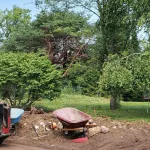
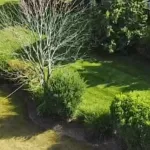
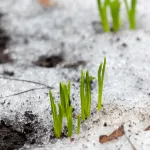


 GreenSky® and GreenSky Patient Solutions® are loan program names for certain consumer credit plans extended by participating lenders to borrowers for the purchase of goods and/or services from participating merchants/providers. Participating lenders are federally insured, federal and state chartered financial institutions providing credit without regart to age, race, color, religion, national origin, gener or familial status. GreenSky® and GreenSky Patient Solutions® are registered trademarks of GreenSky, LLC. GreenSky Serviceing, LLC services the loans on behalf of participating lenders. NMLS 1416362. GreenSky, LLC and GreenSky Servicing, LLC are subsidiaries of Goldman Sachs Bank USA. Loans originated by Goldman Sachs are issued by Goldman Sachs Bank USA, Salt Lake City Branch.
GreenSky® and GreenSky Patient Solutions® are loan program names for certain consumer credit plans extended by participating lenders to borrowers for the purchase of goods and/or services from participating merchants/providers. Participating lenders are federally insured, federal and state chartered financial institutions providing credit without regart to age, race, color, religion, national origin, gener or familial status. GreenSky® and GreenSky Patient Solutions® are registered trademarks of GreenSky, LLC. GreenSky Serviceing, LLC services the loans on behalf of participating lenders. NMLS 1416362. GreenSky, LLC and GreenSky Servicing, LLC are subsidiaries of Goldman Sachs Bank USA. Loans originated by Goldman Sachs are issued by Goldman Sachs Bank USA, Salt Lake City Branch.